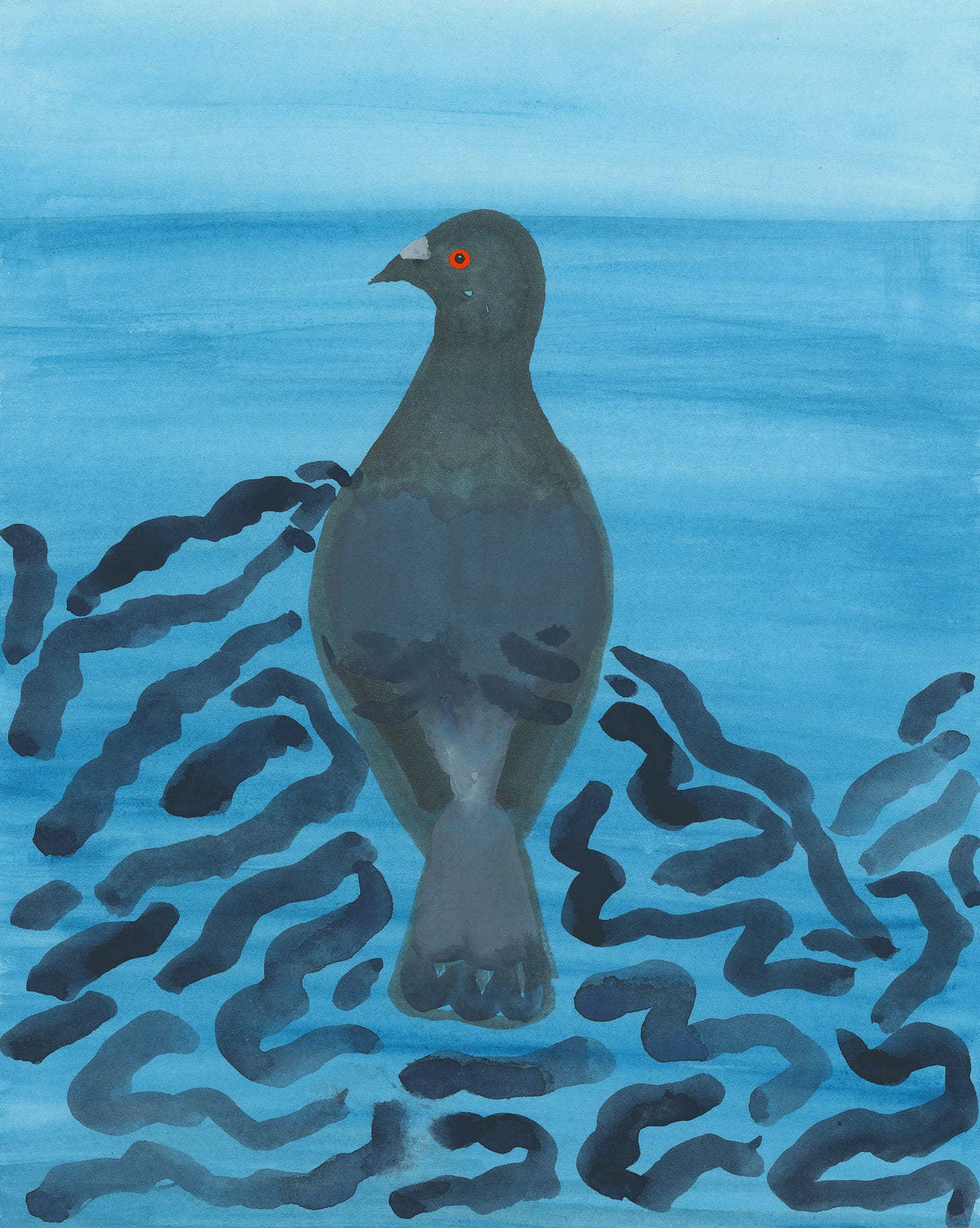Wild Life / rock dove
quiet tides
Hi, friends — Summer is winding down, and this morning was clear and dark at 5:00 am. The Pleiades were sharper than usual, brighter than I’ve seen in a long while. We finally had a burst of rain last week but it was too little too late and the plants are retreating back into themselves, into the cool comfort of their lives underground. I traveled more than usual this summer, and it was surprising to see new things. In València, Spain, I kept tabs on the palomas—sweet but harried collared doves, not unlike my mourning dove friends back home. In Bermuda for a couple of days, the rock doves revealed their true spirits, looking out over the Sargasso Sea.
My intention is to keep these going, though somewhat less frequently. I have an exhibition of drawings opening October 29 in Connecticut and will keep you posted—lots of drawings from the last year but also from the last few years. Thanks for reading, as always. — Amy Jean
I like pigeons. I like that they flock to us and to our architecture. I like that their technicolor plumage runs the gamut from pure white to shimmering purple. I like their strident orange eyes. I like the way their heads bob to and fro when they’re walking. They seem to live in the ever-present, peering up at me with their steady, unblinking gaze. In New Haven, New York, Dublin, Paris, London, I’ve seen them waiting for buses, eating French fries, cooing on air conditioner units. I’ve always wondered where they’re born, and where they go to die.
Pigeons, also known as rock doves, love the city life. I don’t think I’ve ever seen one in the country, and only rarely in a tree. But this summer I saw something new. I was in Bermuda for a few short days and saw a pigeon on a rock overlooking the ocean. It sat there peacefully, majestically even, looking out to the horizon. A pigeon friend alighted nearby, and the two little birds rested on their rock, surrounded by the brilliant turquoise water, lapping gently against the shore.
Bermuda is a tiny spot in the ocean, an island made by a volcano. No one lived there for millennia, until the Europeans arrived (and then its history is quickly complicated, changing rule 30 times). Today it has around 65,000 inhabitants who live under rooftops that catch rainwater. The public buses are a shade of soft pink that follow roads lined with limestone.
A small island in the middle of the ocean 600 miles off the coast of North America feels like a secret note in the margins of a book. Being there unlocked a piece of the world for me, and maybe I was the pigeon on the rock. Bermuda borders the Sargasso Sea, a sea in the middle of the ocean, bordered on all sides by currents. I never really understood this before, that a sea could be in an ocean. The water was remarkably gentle, touching the sky in flat lines.
In Bermuda, the natural world has been complicated and harassed, as species have been introduced (birds were introduced to control lizards, which were introduced to control bugs—it never works as planned, of course). The pigeons don’t belong there, either, and they make life difficult for other rock-nesting species.
But I admired the two on the rock that day. They took a long pause together, and because of them, I did, too. On another nearby rock a gull stood on one leg and stretched its neck occasionally. In the water two big fish swam leisurely through the cove, like old friends. The water faded from pale green to turquoise to gray.
Sargasso links—
A little bit about the Sargasso Sea at NOAA and please, please see the incredible drawings by Else Bolstelmann, who created gorgeous plates of marine creatures in the 1930s based on William Beebe’s observations in Bermuda, at The Marginalian.
Wild Life #42 / this newsletter is a place to learn about the life around us, two gentle pigeons at a time. I do this because I’m not sure what to do about the millions of species in danger of extinction. It means something to see and enjoy the life around us. Thanks for reading and sharing. See you next time.



Thank you for the beautiful pigeon image. Magical!
Amy, your careful and loving look at pigeons will help me be a little more compassionate to the multitude of pigeons that live in New York City. Thanks. Carolyn